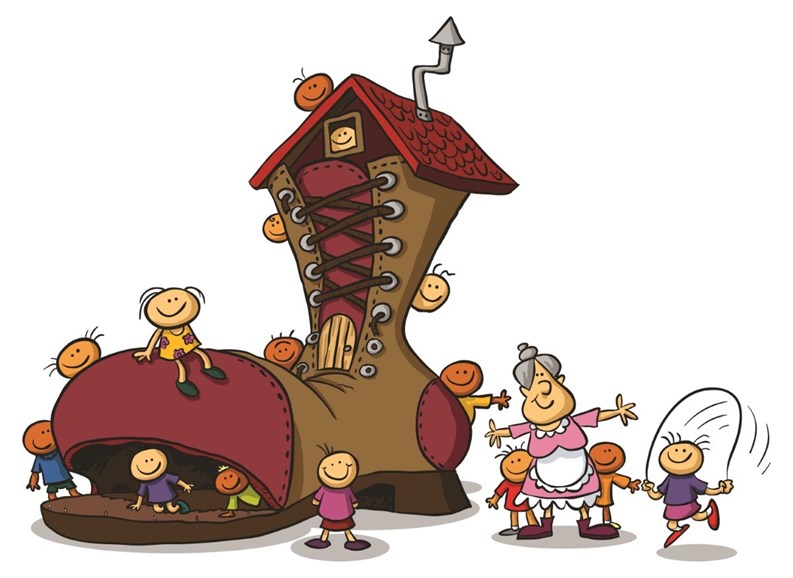Out of nowhere, someone is regularly using the parking space you have had for years. And strangers are appearing regularly in your building’s hallways, though you’re not sure where they belong or if they should even be there. Strangely, you hear children crying at all hours, though your community doesn’t allow kids under 16 to live there.
But who’s the culprit? It’s hard to tell, because unbeknownst to you, one of your neighbors recently moved several members of his extended family into his condo unit. Now, your quality of life is rapidly eroding, but it needn’t be so.
Packing Them In
There are many reasons why a condo owner could have multiple people living in his or her unit; perhaps a child (or adult children with kids) has moved back home because of unemployment or divorce. Maybe other extended family members need a place to stay for a while because of illness or other unforeseen circumstances.
If an adult child moves home and stays in a spare room, it’s often not really anybody's business outside of that household. But if a condo unit is hosting more people than were intended to live there, it can become a concern for neighbors and for condo/HOA administrators.
Overcrowding can be hazardous and unhealthy if it gets out of hand or goes on too long. These crowding scenarios also can lead to security issues that aren’t necessarily easy to untangle. Ideally, all residents know the rules of their community and understand the limits on numbers of residents per apartment. Of course, people don’t always obey the community’s rules, which is why it’s up to boards and property managers to prevent and address this issue in their communities.
Some scenarios that can lead to larger numbers of occupants in a condo unit include a family member’s unemployment, extended families living together due to hardships, and other difficult situations. These could range from extended family members moving in due to age or infirmity, an owner renting out individual rooms in the condominium unit, or an owner having several regular overnight guests, says attorney Russell M. Robbins, a managing partner with the Coral Springs-based law firm of Mirza Basulto & Robbins, LLP.
Of those scenarios, some may be more acceptable to condo boards (and neighbors) than others, depending upon the community. More often than such scenarios, many people in Florida are losing their homes due to foreclosure, or they are tenants who have been evicted, and they are moving in with friends and relatives, says Laura Manning-Hudson, a partner with the law firm of Siegfried Rivera Lerner De La Torre & Sobel, P.A., in Coral Gables.
“That’s the majority of it, from what I’ve seen. A lot of communities with occupancy restrictions have adult children with kids moving in,” Manning-Hudson says. “There could be six people in a two-bedroom unit.”
In the Sunshine State, the effects of the economic crash of 2008 are still being felt, particularly since the housing sector hasn’t fully recovered yet. As a result, many communities are seeing an increased number of extended families living together, largely due to economic reasons, says Lisa Magill, a shareholder with Becker & Poliakoff in Fort Lauderdale.
“Property values went crazy in the late 1990s and 2000s, and you have a huge difference between those who bought properties for a lot of money and now are severely underwater in their mortgage,” Magill says. “It creates tension in communities.”
Local municipalities usually have occupancy restrictions that are determined by the square footage in the unit. But often, a condo or co-op community’s occupancy restrictions are written into the condominium’s governing documents.
Legal occupancy limits are determined for a dwelling unit with two ends in mind: To comply with existing occupancy restrictions of the municipality in which the community is based, and to fit the needs of the co-op/condo community’s residents. These limits differ among municipalities, since some urban municipalities may allow higher numbers of people living in smaller units, and some suburban communities may have stricter regulations on how many folks can live in a condo unit or apartment.
Condos and HOAs can impose occupancy limits that differ from the city or town's limits, as long as they comply with existing laws. Which means boards of such communities can choose to be stricter about how many people can live in a unit than the municipal law stipulates. Generally speaking, municipal laws state that no more than two people can live in a one-bedroom apartment, and no more than four people can live in a two-bedroom apartment; i.e., two people per bedroom, tops.
Minding Safety Issues
Various safety and health concerns can arise when an apartment unit or townhome is housing more than the legal number of occupants. To start, the presence of undocumented strangers on the property who are not known by management, and thus cannot be held accountable for their actions, decreases safety for all residents. Strangers on the property can do what they will and they also can bring in more strangers. After a while in such situations, strangers roaming the halls could become accepted by residents, though it could result in crimes such as burglary and rape.
“Associations are very concerned about security issues—if there are undocumented people and vehicles coming and going, residents want to know if those people and vehicles are supposed to be there or not,” Magill says.
In communities where everyone knows each other and keeps an eye out for their neighbors, adding outsiders to the mix who don’t know the neighbors or the rules could be a path to disaster. So while the issue of a new resident taking someone’s parking space may seem trivial, it might be of great importance to the 82-year-old lady who owns the space, which is located near the front door. Because of her inability to walk well, the lady needs a space close to the door, and making her park farther away could perhaps lead to her falling and breaking her hip.
An inordinate number of residents in a unit or units also can create tension among neighbors because residents pay for utilities like water as a common expense. If a few apartments seem to be using more than their fair share of the water, people could get justifiably angry.
“I’ve seen people doing laundry commercially in the community’s laundry room—washing other people’s clothes all day,” Magill says.
One restriction for occupants is allowable for residential communities that are designated as 55 and older communities: age limitations. Legally, such communities can prohibit residents’ adult children with kids from moving in.
Overcrowding can lead to unsanitary conditions, too. Occupancy limits are set partly to avoid situations where you have six people or more in a two-bedroom unit, for example. But having a higher density of occupants than allowed could lead to an unacceptably dirty unit, where dust, bags of refuse or odd smells make their way into the hallway. Having too many folks in a unit also can lead to too much stuff or a hoarding situation, which in and of itself can be a health or fire hazard.
Associations are designed with occupancy restrictions in mind. Increases over the maximum occupancy can result in unbudgeted expenses to the association, such as utility services and waste removal, and also can put increased wear and tear on parking lots and common areas, Robbins says. “In the event of an emergency, excessive occupancy over permitted limitations can have unforeseen consequences,” he says.
Imagine a hallway or stairways being mobbed with residents during an emergency in which an evacuation must proceed smoothly and quickly. Added to the chaos of people trying to leave through the smoke from a fire, and the nervous cries of neighbors echoing through the building, you also have undocumented residents who don’t even know which way to evacuate. The last thing any community needs during a crisis is a logjam of people impeding traffic down a hall or stairway, since such an obstacle could lead to people dying from smoke inhalation, from the chaos resulting in a human stampede, or other hazards. Such disasters could occur because there are simply too many residents in the building.
Spotting Violators
“Love they neighbor” is an oft-quoted axiom, but it’s not so easy to practice when you don’t even know your neighbors or worse yet, there are too many of them. So what steps should a neighbor take if they suspect or know that a unit in their building is housing way too many people? Contact the manager, since it is his or her job to deal with the situation, not yours.
Depending upon the authority given to them in the governing documents, the manager may be able to cite the offending unit owner for having too many people living in the unit, or for having undocumented guests. Some communities put a limit on how long guests may stay, such as 30 or 60 days, but the rules could be waived for a situation in which the unit owner has a girlfriend or boyfriend regularly staying at the residence. Even so, the community’s governing documents may require that the friend (or any extra residents) register with the condo office so management knows who they are.
A soft-pedal approach is often the best way to confront the issue, experts say. The manager might just check with the unit owner to see what’s up with his or her unit.
“It’s preferable to make an amicable inquiry before assuming the worst,” Magill says. “A lot of times if there’s a hardship, the association won’t take action, or might grant a temporary variance.”
If the extra residents need to vacate the unit, managers in most communities will not help to find them new lodging. But if an overcrowding situation is a result of family emergency such as an illness, unemployment, divorce, etc., a condo board and/or management team can work with the unit owners to find alternative housing, rather than just evicting everyone or litigating, which are two last-resort options.
“It’s not the board’s responsibility to find alternative housing, it’s the responsibility of the unit owner,” Magill says. “In cases where’s there’s a need for assisted housing for the resident, sometimes management has a relationship with assisted living facilities [and can help with arrangements]. The board also can work with the unit owners by giving them more time to relocate their extra guests.”
When the association is sending a violation letter, it’s helpful to suggest alternatives to the occupants, such as contact information for units in the association available for rent (the individuals may make better tenants because immediate family members are unit owners in the association already), Robbins says.
“Alternatively, if the association has acquired title to units in its lien foreclosure, these units may make attractive short-term leasing options for overcrowded units,” Robbins says. “It would be helpful to have a list of area hotels that could be included in the violation letter which points the residents in the direction of alternative short-term housing for the excessive occupants.”
Prevention is a key to avoiding problems with overcrowding. Boards of directors of associations, and management staff, should plan to prevent the problem by creating regulations that give them the authority to require compliance.
Open communication in the community also is important. Management should inform residents of the rules before penalizing them for breaking them.
“Friendly letters always help to start” the process of correcting overcrowding in a unit, Manning-Hudson says. “You might ask, ‘How long are your guests going to be visiting?’”
In worst case scenarios in which a resident will not comply with occupancy restrictions, the community’s lawyer may be needed. The attorney can set in motion eviction procedures, or litigation, if necessary.
Jonathan Barnes is a freelance writer and a frequent contributor to The South Florida Cooperator.







Leave a Comment